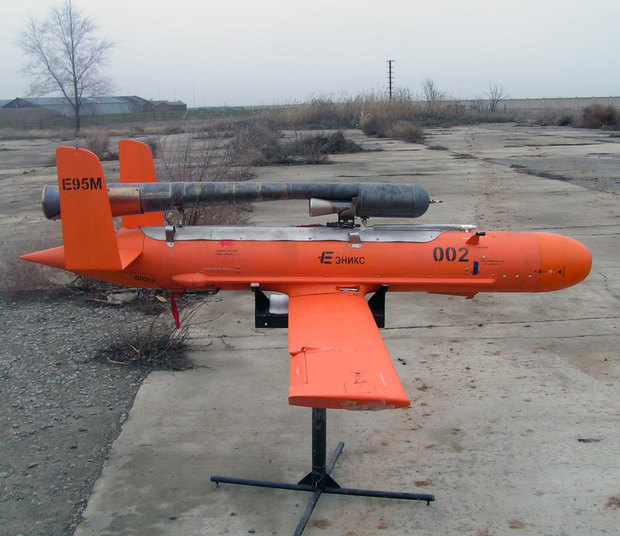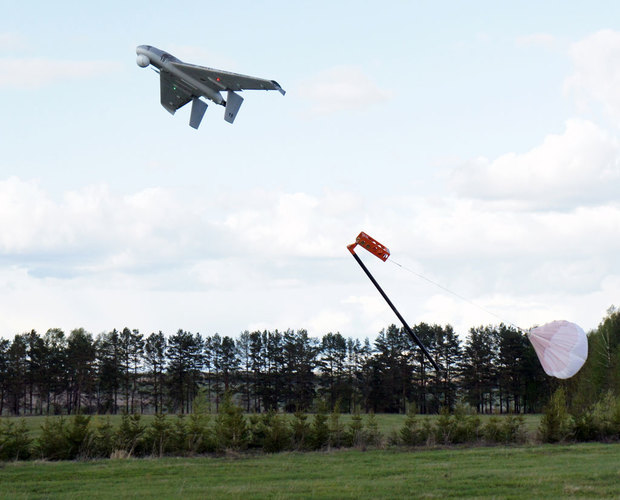Kazan ENICS flying with Ural FORPOST in the Syrian sky
Tula gunmakers purchased air targets for 80m rubles in Tatarstan
As Realnoe Vremya found out, one of the largest unmanned vehicle manufacturers ENICS from Kazan increased the amount of contracts with the Ministry of Defence of Russia almost 5 times – up to 500m rubles. And the total amount of orders is due to reach a record number – 1bn rubles. As the director general of the company Valery Pobezhimov told, the armed conflict in Syria allowed to broaden the horizon for purchase of unmanned vehicles: even ENICS from Kazan and FORPOST from Urals got military contracts.
Kazan air targets will fly to the Astrakhan polygon of the Ministry of Defence
A signing of new contracts with ENICS became known from official messages about the results of tenders on zakupki.gov in early September. One of the largest enterprises of the defence industry of Russia, the Instrument Design Bureau named after A. G. Shipunov, that makes high-precision weapons for Ground Forces and Navy, said ENICS was the winner of the contest on delivery of air target complexes.
The Kazan producer of unmanned vehicles is due to make and deliver several tens of Е95М ground air targets made of composites and provide their shipment to the Military Unit No. 15644 in Astrakhan Oblast where the central interspecific polygon of the Russian Ministry of Defence by the end of this year. It is the location of the scientific and test centre of armament and military machinery of the Strategic Rocket Forces of the Russian Federation where anti-aircraft warfare is tested. According to zakupki.gov, the total sum of a series of contracts of ENICS makes up almost 80m rubles. The director general of ENICS CJSC Valery Pobezhimov confirmed the signing of the contract on targets, while his first deputy Aleksander Kurmachev affirmed the financial parameters. For the company, it is important to maintain the status quo. The documentation of the contest proves ENICS was the only supplier, that is to say, there was no price fight.

The Kazan producer of unmanned vehicles is due to make and deliver several tens of ground air targets Е95М made of composites and provide their shipment to Military Unit No. 15644 in Astrakhan Oblast where the central missile range of the Russian Ministry of Defence by the end of this year
Out of competition
It turned out no Russian and foreign producer of unmanned vehicles did not not manage to create a 'flying' and radio-controlled target for a good price before the implementation of this novelty in 2012-2013. The director general of ENICS CJSC Valery Pobezhimov confirmed Realnoe Vremya that new contracts were signed and he emphasised he was not waiting for rivals to appear all of a sudden. A competitive price for Е95М was reached due to untraditional technical solutions that no one has excelled.
'Pulsejet MI35 of their own design is the core of the target's engine,' tells Valery Pobezhimov. 'Their main merit is the absence of moving and rotating details. Their use as a power plant in the targets allowed to reduce their price considerably.'
The state bench tests of the MI35 engine ended in 2012. Then it was recommended for a mass production and was accepted to provide the Russian Ministry of Defence. Over 400 Е95М targets have been produced since then. They operated about 1,500 flights, Pobezhimov specified. Creators of Igla-S, Tunguska M, Pechora-2M anti-aircraft warfare were interested in big purchases. And the peak was during the armed Syrian campaign.

Kazan unmanned vehicles left Ural behind
When the Russian Army switched to Russian-made military machinery, the delivery of Eleron-3SV UAV complexes for intelligence has risen five times. According to Valery Pobezhimov, if the company had contracts with the Ministry of Defence for 100m rubles in 2013, 500m rubles were earned in the first quarter. A competitive price is the recipe for appearance in the defence industry. Modernised Eleroa-3SV UAV is about two times cheaper, compared to its analogues assembled according to foreign technologies — Zastava — whose production in Russia started in 2010 according to a contract between Oboronprom and Israel Aerospace Industries Ltd. But in the talk to the correspondent of Realnoe Vremya, he tried to escape this topic by all means.
It should be reminded an agreement on the opening of a UAV assembly plant was signed 6 years ago during a visit of the executives of the Ministry of Industry and Trade of Russia to Israel. For some reason it was supposed to be located in Tatarstan, though, actually, the factory appeared in Yekaterinburg in the Ural Works of Civil Aviation, which is a part of Oboronprom United Industrial Corporation of Rostec.
According to the mass media, in 2011, the Russian Ministry of Defence signed an agreement with the Ural factory on delivery of 10 complexes of FORPOST UAVs until 2013 for 9,006bn rubles (each complex consists of a ground control station and three unmanned vehicles) and 27 complexes with mini-UAVs like Zastava (IAI Bird Eye 400) at 1,3392bn rubles. They are still produced since then.
In February 2016, Russian Weapon information agency published a photo of a Russian unmanned aerial vehicle FORPOST in the Syrian sky at the height of the Syrian campaign. The photo was taken by a Syrian spotter. So Ural FORPOST is a rival of Kazan ENICS for orders of the Ministry of Defence of Russia. They don't bother each other because Eleron from Kazan is a short-range vehicle, while FORPOST from Urals — a middle-range one. Valery Pobezhimov told the company would reach 1bn rubles due to the UAV contracts by the end of the year because the demand for unmanned vehicles among the militants is the locomotive of the development of this type of aviation.